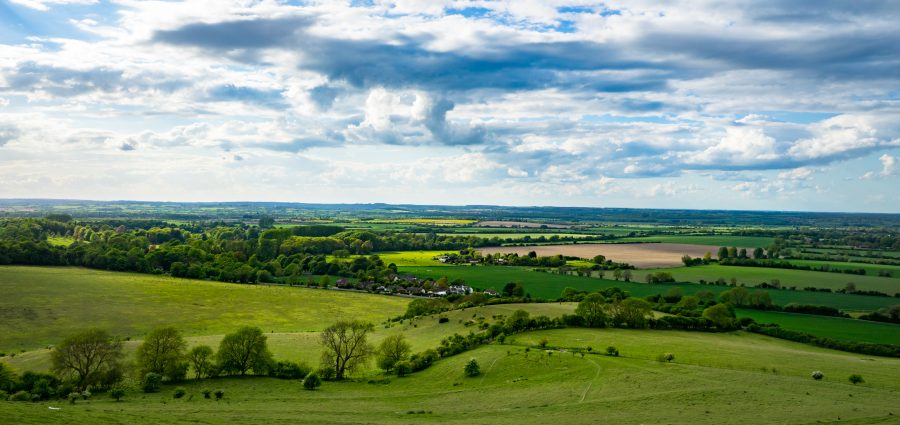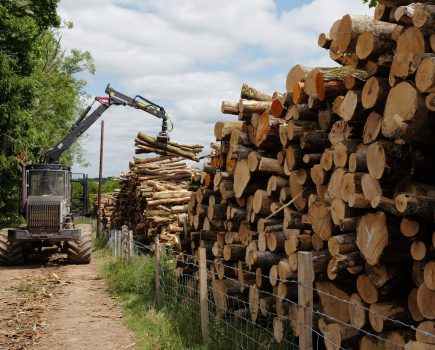Why your accountant will be extinct in a few years… explains Will Brandreth, Chaverys
What is natural capital?
Achieving food security for 10 billion people, reaching net zero greenhouse gas emissions, reversing declines in biodiversity, achieving clean air and water – natural capital sits at the heart of many of the major challenges of the 21st century.
Natural capital refers to the underlying stock of natural assets that are fundamental to all economic activity. It has been estimated that 53% of global GDP is reliant on nature. Agriculture and its stakeholders are at the very core of natural capital. This includes our soils, crops, hedgerows, trees, water, and biodiversity. On a traditional balance sheet these natural assets provide income through food, fuel, and fibre.
But natural capital also delivers many benefits that we don’t traditionally account for:
- It stores carbon and keeps it out of the atmosphere to tackle climate change
- It slows rainwater runoff and reduces flood risk downstream
- It provides biodiversity that pollinates crops
- It provides outdoor space for people to enjoy.
Reflecting this, the landmark Dasgupta Report called for a change to our measures of economic success; for nature to be treated as an asset and for natural capital to be introduced into national accounting systems.
Environmental issues are changing the way governments legislate, companies operate and people make decisions. This means that becoming literate on energy, carbon and natural capital is now a necessary skill for businesses that will both save money and make money.
At Chavereys, we believe traditional measures of company value must be extended to include natural capital and environmental impacts. It should be business common sense to measure and optimise your natural capital assets and this will present opportunities unique to each business.
Why natural capital matters?
1. Compliance & value-chains
Many businesses already report their energy, carbon, and water footprints. The development of standardised accounting rules and a second generation of calculation tools is increasing confidence in accounting and reporting.
All UK supermarkets now have a net-zero target, and most have aligned to a scheme called the Science-based Targets Initiative. Because over 90% of a supermarket’s emissions come from the supply chain, they are requiring suppliers to report their own carbon emissions and set net-zero targets themselves. This creates a trickle-down effect along the supply chain whereby all farming and food businesses will soon be expected to report their carbon footprint to their customers.
In finance, UK sustainability disclosure requirements will further require corporations, asset managers and owners, and investment products to disclose sustainability data.
2. Efficiencies and income generation
Understanding energy use across the business identifies opportunities to improve resource management and save money, not in years but in months. The largest sources of emissions – fuel consumption, fertiliser use, feed, and electricity – will also be some of the largest operating costs.
Income streams from solar PV, research and development tax relief and climate change agreements have been material to date, and it is a no-brainer to believe that similar schemes will continue to scale. Businesses that installed solar arrays have seen the win-win of reduced exposure to rising electricity prices while reporting year-on-year reductions in their carbon footprint.
3. Marketing
Once a company understands its natural capital and carbon footprint, it can effect positive change. This opens opportunities for marketing, to create a point of distinction in products or services by communicating environmental credentials. The added value can be through market share, product price premiums or by winning stakeholder support for new initiatives such as local development.
4. Natural Capital Markets
Enhancing natural capital is creating opportunities for diversification of incomes. Biodiversity net gain (BNG) and nutrient neutrality are now a pre-requisite for new developments.
Voluntary carbon markets exist for woodland creation, peatland restoration, agricultural soil carbon and nature restoration. As these markets mature, a common feature is that the best prices per unit of traded carbon are achieved by those schemes that demonstrate co-benefits for biodiversity and water quality.
New markets around water management are likely to emerge for improving water quality and reducing flood risks.
Trinity AgTech
The opportunities presented by natural capital are significant but there are risks, too. Accusations of greenwashing and dodgy carbon credits can undermine businesses and unsettle entire markets. The first generation of carbon calculators gave widely differing outputs, often using average data that wasn’t UK or site-specific. It was the equivalent of doing a set of farm financial accounts using the John Nix pocketbook for costings.
To ensure that we deliver bespoke, science-based data to clients, we have partnered with the sector’s leading calculation tool – Trinity AgTech. Trinity’s natural capital calculator “Sandy” is the standout digital platform in this space, the only platform that can capture each farming business’s unique operations, impact, and natural capital. It is backed by the sector’s largest independent scientific board and certified to the ISO 14067 carbon footprint standard.
Our partnership with Trinity is about more than a calculation platform because it is essential that professional services provide a broad ecosystem of data management, advisory support and market development to landed business and the industry. Trinity has developed an aligned natural capital markets platform that links Sandy to markets for carbon and biodiversity enhancements.
Measure, impact, and monetise
A business should start with a unique baseline assessment, to quantify natural capital assets, carbon- and water-footprints and understand its objectives.
From here, “what if” scenarios can estimate the impact of interventions and investments. This can identify where value can be extracted through markets, grants and schemes.
Delivering on natural capital will enhance food security and help the sector thrive by diversifying incomes, improving efficiencies and enhancing the natural asset base.
Too often there are examples of the sector losing out in the supply chain and we want to ensure this does not happen with natural capital. Like an OPEC for natural capital, we need to ensure quality of supply and value in returns. The opportunities are there and will go to those who pursue them.







